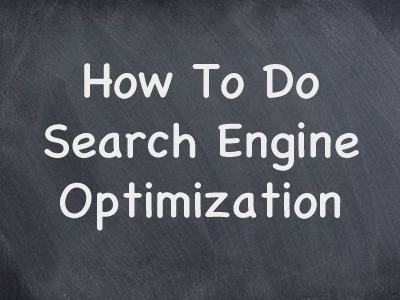In this article I will share with your how to do search engine optimization. Search engine optimization or SEO as it's known is the art of optimizing web pages with the goal of having them ranking better on search engines like Google. Only Google truly knows all the things they take into consideration when determining how to rank a web page. The process of search engine optimization is all about giving your pages the best chance to rank well. Here are the main things you can do to get the best possible search engine optimization.
1. Keyword Research
The first thing you need to do when optimizing a web page for search engines is keyword research. Keyword research is the process of determining which keywords people are most likely to type into search engines like Google when looking for products, services, or information like yours.
The best way to find keywords is to think of words you might use to find your products, services, or information online and then type that into Google's keyword search tool. You can access Google's keyword search tool by clicking here. Google's keyword search tool will suggest other keywords and phrases that people are typing to find products, services, and information like yours. Take the time and go through this process until you have a good set of frequently searched keywords.
2. Page Title
Once you've determined the keywords you want to target the first thing you need to do is come up with a natural language page title that includes your keywords. Try to keep the number of keywords included in your page title to around three.
3. Description
The next place you want to include your keywords is in your page description. The page description is also known as the meta description. This is the information about your web page that Google will display below the big blue links in their search results. The same thing applies to the meta description as the title. You'll want to include your keywords in the description using natural language. Unlike the page description you can use up to eight of your keywords and phrases in your page description.
4. Keywords
Keywords or meta keywords are just like tags for your web page. Google doesn't pay much attention to your meta keywords but it's good to include them in your web page. Sometimes they may help other directories on the web find your page and then those pages might end up being crawled by Google. In around about way including meta keywords may still have search engine optimization value.
5. Content
Now that you have the basic done it's time to include your keywords in your content. The content of a page is what actually appears on your web page. You want to be sure to include your targeted keywords plenty of times using only natural language. Google will not give pages that appear spammy good ranking. The content also much be original. Google typically throws out duplicate content. You'll also want to be sure your text content is in HTML. Google doesn't take into account text that's included within images or flash.
6. Backlinks
Last but not least your web pages need to have plenty of inbound links. Inbound links from other highly credible and relevant sites is the biggest factor to achieving top ranking on Google. A good way to find these links is to contact the top 1000 search results for each of the terms you're targeting and try to get them to write about you in a blog with a link to your website.
There's a lot more how to search engine optimization but by following these simple steps and sticking with them you're sure to eventually see results.
